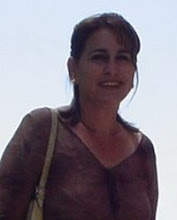
By Alfredo Hernadez Carralero
Rafael Orejón Forment would be the first in the list of the 23 youngsters that were murdered and massacred by the end of December 1956 on the north coast ofthe former province of Oriente, in an operation luanched by the Batista dictatorship under the code name “Christmas Gift” that passed into History as the Bloody Christmas.
Orejón was then Chief of the July 26 Movement in Nicaro, a municipality in the Holguin province and was killed that day in La Portada, a place near the industrial area of the current Mayarí municipality.
The spree continued until December 26th of that year, and eventually left 23 victims, all from different municipalities of the Cuban north-eastern region, from Las Tunas to what is now the province of Holguin.
In that region of the former territory of Oriente the July 26th Movement was very well organized since late 1955, the national leadership had primary cells in Sagua de Tanamo Mayari Nicaro, Antilla, Banes, Holguin, Gibara, Puerto Padre and Las Tunas.
To back up the arrival of the Granma yacht expedition had they had increased the number of sabotages, posters with revolutionary slogans were secretly displayed in public places, bursting of firecrackers, and distribution of leaflets that appeared in theaters, parks and streets.
The dictator Fulgencio Batista had alerted Colonel Fermin Cowley Gallegos, Chief of Military Regiment of Holguin, about the possibility of the occurrence of a landing in the area under its jurisdiction and urged him to prevent the occurrence there of supporting actions.
It was then organized the operation called Christmas Gift. The repression was brutal and the bodies of young revolutionaries appeared savagely tortured, hanged or shot, with the premeditated purpose of spreading terror and extinguish the rebel flame that stretched across the Sierra Maestra mountain range under the orders of the Commander in Chief Fidel Castro Ruz.
Most of those killed were taken from their homes, tortured and their bodies were found dumped in different places, only because they opposed the dictatorship of Fulgencio Batista.
With all the logistical support of forces and means, the bloodthirsty colonel Fermin Cowley Gallegos, blasted his actions against the revolutionary movement from the 23 until 26 of the last month of the year.
The massacres of that black December truncated life among others of the leader of the July 26 Movement in Holguin, Pedro Diaz Coello and figures of the Socialist Party, workers and union leaders.
The slain youth lived nights and days of horror in the east Cuba, as well as their families and people in general, without their criminals managing to put out the light of the triumph of their ideals, reached on January first, 1959.
Cowley Gallegos finally paid for his crimes when he was executed on November 23, 1957 in Holguin by members of the July 26 Movement of the eastern territory.




































